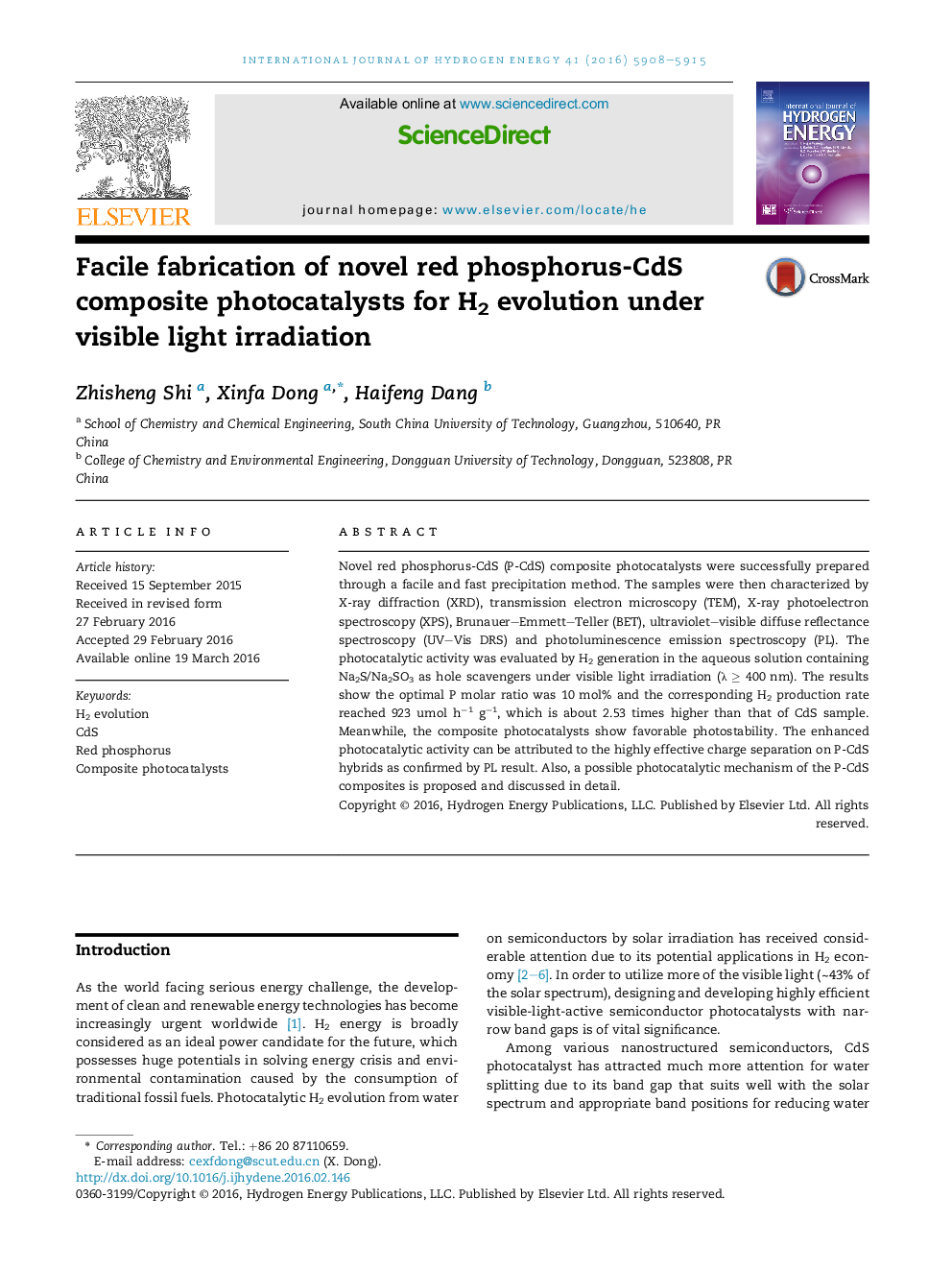| Article ID | Journal | Published Year | Pages | File Type |
|---|---|---|---|---|
| 1273594 | International Journal of Hydrogen Energy | 2016 | 8 Pages |
•A facile and cost effective method of precipitation to synthesis P-CdS composite photocatalysts.•The catalyst has improved charge-separation efficiency and increased charge carrier lifetime.•Photocatalytic H2 evolution activity of red P modified CdS is significantly enhanced.•The composite catalyst remained perfective stability and activity even after five cycles.
Novel red phosphorus-CdS (P-CdS) composite photocatalysts were successfully prepared through a facile and fast precipitation method. The samples were then characterized by X-ray diffraction (XRD), transmission electron microscopy (TEM), X-ray photoelectron spectroscopy (XPS), Brunauer–Emmett–Teller (BET), ultraviolet–visible diffuse reflectance spectroscopy (UV–Vis DRS) and photoluminescence emission spectroscopy (PL). The photocatalytic activity was evaluated by H2 generation in the aqueous solution containing Na2S/Na2SO3 as hole scavengers under visible light irradiation (λ ≥ 400 nm). The results show the optimal P molar ratio was 10 mol% and the corresponding H2 production rate reached 923 umol h−1 g−1, which is about 2.53 times higher than that of CdS sample. Meanwhile, the composite photocatalysts show favorable photostability. The enhanced photocatalytic activity can be attributed to the highly effective charge separation on P-CdS hybrids as confirmed by PL result. Also, a possible photocatalytic mechanism of the P-CdS composites is proposed and discussed in detail.
Graphical abstractFigure optionsDownload full-size imageDownload as PowerPoint slide
